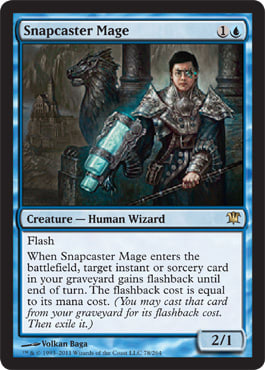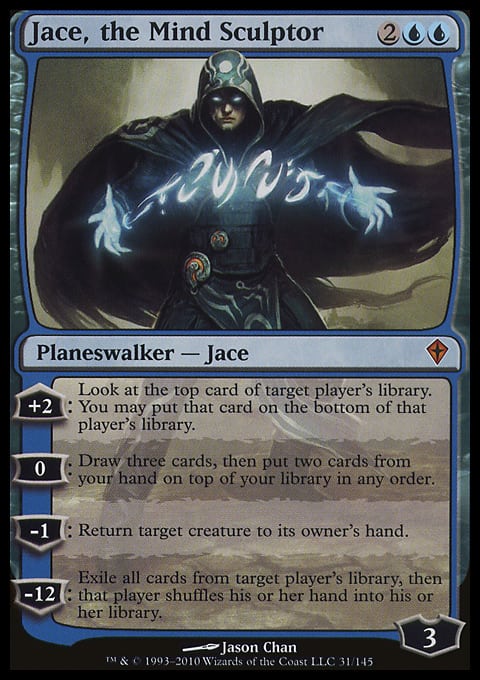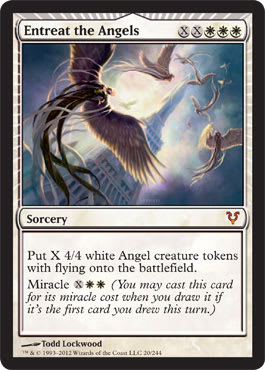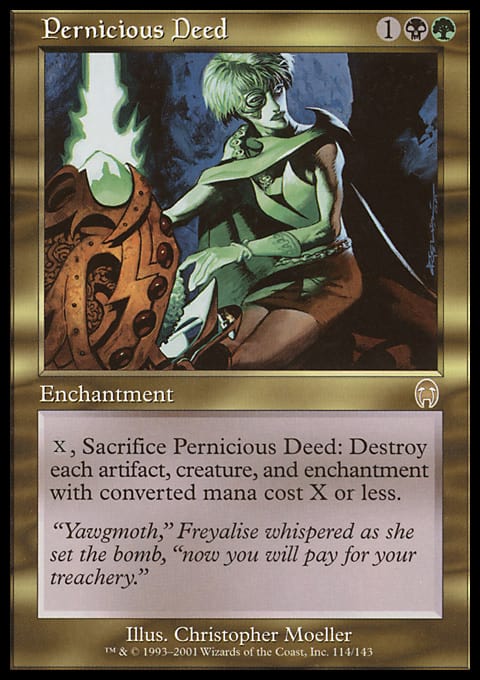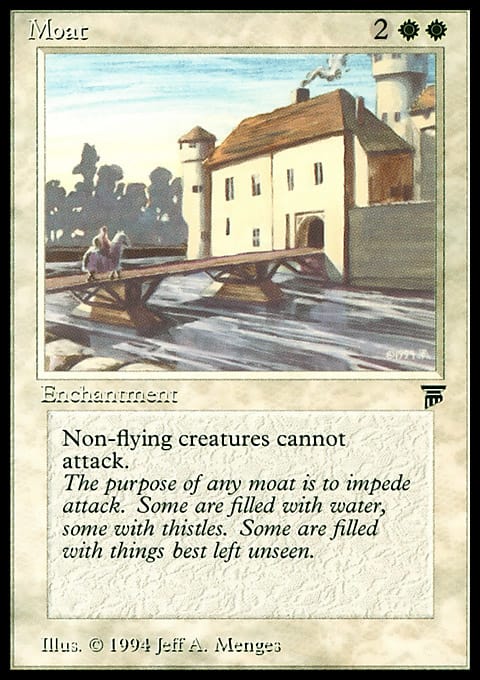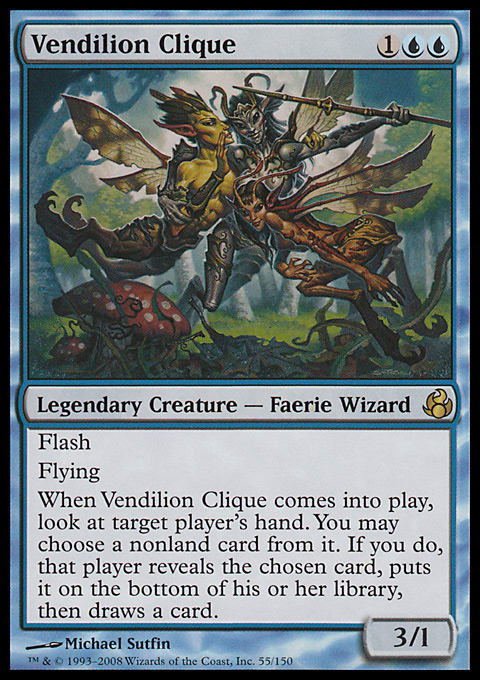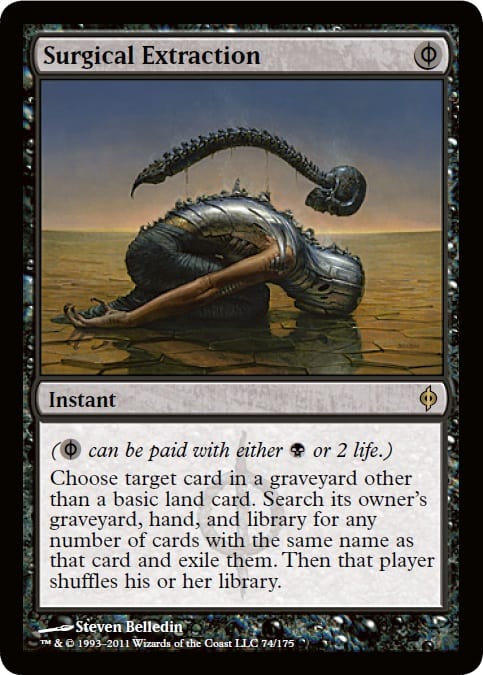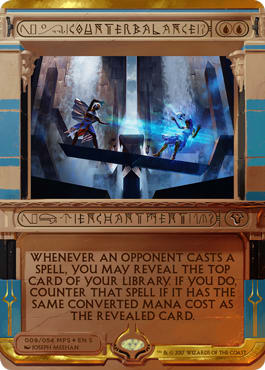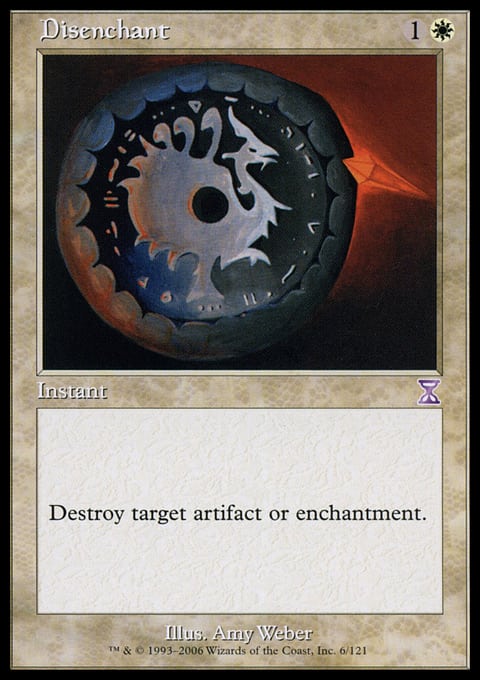Hey there! Most of you don’t know me, so a short introduction might be in order. I’m Max, and I live in the cold wastelands of northern Europe (Helsinki, Finland to be more precise). I’ve been playing Magic for roughly eleven years now, and my magical accomplishments include a Pro Tour Top 8 (Philly 2011), two national championships (2006 and this year), third at Team Worlds 2006, and a Gran Prix Top 8 just recently in Ghent.
My Pro Level is currently Gold, mainly off the back of the Top 8 at Philly and seventeenth at Worlds, as neither Honolulu nor Barcelona went all that well. When I’m not playing Magic, I study for my Master’s Degree and make music (you can find some links at the end of the article).
Well, that’s probably more than enough about me; let’s move on to the main attraction. You are here for the decklists, aren’t you?
About the List
I received the initial list from my friend Ensio, and after a bit of tuning, here is the list I played in Ghent:
"Jace’s Angels"
- Creatures (4)
- 2 Snapcaster Mage
- 2 Vendilion Clique
- Planeswalkers (3)
- 3 Jace, the Mind Sculptor
- Spells (30)
- 2 Counterspell
- 2 Spell Pierce
- 4 Brainstorm
- 4 Force of Will
- 4 Swords to Plowshares
- 2 Entreat the Angels
- 3 Terminus
- 1 Oblivion Ring
- 3 Counterbalance
- 1 Vedalken Shackles
- 4 Sensei's Divining Top
- Lands (23)
- 2 Plains
- 5 Island
- 1 Glacial Fortress
- 1 Marsh Flats
- 1 Scrubland
- 1 Underground Sea
- 3 Tundra
- 4 Flooded Strand
- 4 Polluted Delta
- 1 Karakas
- Sideboard (15)
- 3 Thoughtseize
- 1 Duress
- 2 Surgical Extraction
- 2 Grafdigger's Cage
- 1 Nihil Spellbomb
- 1 Moat
- 1 Disenchant
- 1 Terminus
- 1 Counterbalance
- 1 Vendilion Clique
- 1 Spell Pierce
Having played with this list quite a lot both online and locally, I feel that both the main deck and sideboard are pretty perfect. Making sideboards for Legacy events can be pretty tough, and I prefer to go with a more generic sideboard and have a couple of specific cards to improve really bad matchups.
If you have some sort of predictable metagame at your local events, feel free to cut the unnecessary cards. At events such as Grands Prix, I have some expectations on what I’m going to face (R/U/G, Maverick, Reanimator), but I also know to expect pretty much anything. As a proof of this, I played against such cards as Worm Harvest and Sigarda, Host of Herons at the GP.
I initially tried some number of Wastelands along with Crucible of Worlds in the main, but sacrificing your own lands is just not something that this deck wants to do. Playing a lot of basics is a really good thing, as you ideally want to fetch out just basics. In the matchups in which you bring in the discard, you are usually not playing against Wasteland, Back to Basics, or Price of Progress, so the nonbasics are just fine. Some thoughts on individual cards:
- Snapcaster Mage – I only wanted a couple, as the body is not very important when you are not running Equipment. It’s still pretty awesome as a way to have access to more Brainstorms in particular.
- Vendilion Clique – I really like this card in the list. It’s good against most decks, and seeing the info against something like R/U/G can easily win you the game. As going to time can be a problem with the deck, Vendilion Clique at least puts some sort of clock on your opponent.
- Eight counterspells – This is pretty standard, and I think you want some sort of spread between the different counters.
- Counterbalance and Sensei's Divining Top – I only wanted three Counterbalance main, as it is not the best against some decks, but Top is really insane in this deck, and not playing four would be a mistake.
- Swords to Plowshares and Terminus – Seven main-decked removal spells feels like a good number, especially when complemented to Oblivion Ring and Vedalken Shackles. Terminus is insane in many matchups, but I don’t want too many against some decks, hence the fourth one’s existence in the sideboard.
- Jace, Entreat, and Shackles – These cards might seem like they don’t really belong together, but they are the cards that usually win you the game. During the GP, I never killed anyone with Jace, but it is an option. I started out with only one Entreat the Angels, but it is really good, and I never side it out. Entreat allows this deck to win in ways that it could not win before. Making three Angels mid-combat puts the opponent in quite a squeeze. Vedalken Shackles was very good every time I drew it, and would keep playing it main, even though I had my doubts before the tournament.
- Four discard spells – The one Duress is there mainly as something you can bring in against decks such as burn, where Thoughtseize is pretty terrible. I started tuning this deck when Sneak and Show was a big thing, and discard was pretty much the best thing you could be doing against them (compared to splashing red for Blasts), and the black splash just kind of stuck. It’s pretty good against all combo decks (except Elves), allowing you to have a really good matchup post-board.
- Five graveyard-hate spells – Diversifying a bit here, with Cage being at its best against Dredge and Reanimator, while Nihil Spellbomb is pretty mediocre against Dredge but something you can bring in against decks with more of a value plan for their graveyards (Life from the Loam comes to mind). Surgical Extraction comes in both against graveyard decks and combo as a way to potentially lock them out.
- Moat – This was a late addition against tribal decks, as I wanted something that was as good as possible against Goblins, which is a really bad matchup. The one time I played against Goblins, I of course slammed it on turn four, and it held of his squad of fifty or more Goblins. (I kid you not.)
- Disenchant – I wanted to play two, but I just couldn’t find the space for it. It’s at its best against Maverick, as they usually have both Choke and Sylvan Library, which are pretty rough, along with the occasional Equipment.
Pointers
If you are interested in playing this deck, I would strongly recommend that you spend some time playtesting it against friends (or online if you have the cards) before attending any competitive tournaments. The deck is challenging to play correctly (I sure made my fair number of mistakes at the GP), so here are a few general pointers, many of which should be pretty familiar if you have played similar decks before.
- Play fast; I really mean it. During some draw-go phases of games at the GP, I literally spent three seconds on each of my own turns. This is a deck that is quite low on cards that actually win the game. Usually, you come to a point at which you pretty much can’t lose the game, but your opponent will probably keep on trucking until you actually show him that Entreat or Jace ultimate. It might be a good idea to urge your opponent to play faster. Some might think that it’s not cool (or something similar) to hassle your opponent to play faster, but the truth is that many people just play way too slowly. A Maverick player who plays slow might finish all his matches normally when playing against other creature decks or turn-three combo decks, but when the games suddenly take more turns than normal, you might be stuck in an awkward spot if it goes to Game 3.
- Remember what you have done. This deck involves a lot of rearranging cards on the top of your library, and an easy way to punt a game is to not remember in which sequence the cards on the top of your deck are. This might seem trivial, but when you are playing the eighth round of the day, your concentration might not be the best. Not remembering what’s on top leads to missed Counterbalance flips and unnecessary usage of Sensei's Divining Top (which can be pretty important if you are short on mana).
- Fetch basics. It’s usually correct to fetch an Island first and then go for Plains or Island depending on what you have in hand. You usually want to put an early white source down so that you can cast a potential miracle Terminus. If you happen to draw the basics, that’s usually even better, as you can save the fetches for later in the game (or for use with Counterbalance). Remember that you can fetch in response to the miracle trigger.
- A resolved Entreat the Angels is almost always going to win the game—or at least help you stabilize, so try not to waste them. Against R/U/G, it’s perfectly fine to resolve an Entreat for one even though you have six lands just to play around Daze and Spell Pierce. Against decks without counters, feel free to just slam it for the full value, but if your opponent is running sweepers (Engineered Explosives, Pernicious Deed, or such), try to play the Entreat end of turn with Brainstorm or Top.
- Be familiar with Brainstorm and miracles. Most of you probably know how this works, but it’s good to be careful—especially in a competitive tournament. When you play the Brainstorm and there is the possibility of playing something with the miracle cost, draw the first card separately, and if it’s a miracle, place it somewhere other than your hand. Then, proceed to resolve the rest of Brainstorm (draw two more and put two back) before moving on to casting the miracle.
- The most intricate and difficult card in the deck is Jace, as there are so many options every time you use him. It’s usually correct to just Brainstorm all the time—unless both of your Entreats are in your graveyard and you really need to close the game. Older versions of this deck needed to kill with the Jace ultimate more often, which could be a bit awkward at times. Basic stuff such as fatesealing to get out of Lightning Bolt range applies here of course.
Sideboarding
I know many writers refrain from doing it, but I’m going to supply you with a rough guide to sideboarding. I’m not going to cover all possible matchups, as there are so many viable decks in Legacy, but if there are any particular matchups that I missed, hit me up in the comments.
Maverick
+1 Terminus+1 Disenchant
+1 Moat
−1 Spell Pierce
Moat is not at its best here, as Maverick has one or several Qasali Pridemages, but it’s still worth bringing in. The best cards the deck has against you are Gaddock Teeg and Choke. Thalia, Guardian of Thraben and Sylvan Library can be annoying but still very manageable. Counterbalance is not at its best here, and I tend to leave in one Pierce to deal with the problematic enchantments.
R/U/G
+1 Terminus+1 Moat
−1 Spell Pierce
−1 Counterspell
This varies a lot more than against Maverick, so feel free to deviate against this guide as you see fit. Oblivion Ring is too slow here (plus, it doesn’t deal with Nimble Mongoose), and some of the counters are not that important. Moat is a bit slow, too, but it actually locks out two thirds of R/U/G’s guys, and Delver of Secrets really is the worst of the deck’s creatures against you. Counterbalance is naturally totally insane in this matchup. I usually bring in Vendilion Clique, as it trades with Nimble Mongoose and as the deck plays so many different kinds of counterspells, seeing the information is really good. At the GP, I played against R/U/G and dropped an end-of-turn Clique, seeing three Spell Pierces and a Daze; it was pretty smooth sailing from there on.
Reanimator
+2 Grafdigger's Cage+1 Spell Pierce
+3 Thoughtseize
−3 Terminus
The plan here is to never allow Reanimator to cheat a creature into play. The Reanimator player is probably bringing in Show and Tell, so having the discard is pretty good here. Counterbalance allows you to lock him out of some of his stuff later on, but I don’t think you want to bring in the fourth one, as finding cards to take out can be a bit tough after the initial nine. This is a matchup that is not very good pre-board but that becomes a whole lot better after.
Goblins and Merfolk
+1 Moat+1 Terminus
+1 Disenchant
+2 Thoughtseize
−2 Spell Pierce (on the draw)
−1 Force of Will (on the play)
−1 Counterspell (on the play)
The decks play very different cards, but your game plan against them is pretty much the same. Goblins is much tougher, as that deck has Goblin Ringleader for card advantage, so trading one-for-one is not a winning proposition (unless that means you get to Entreat for three or more or drop Moat). I like keeping in the Spell Pierces on the play to try to hit Vial, but on the draw, they are pretty bad. Against Merfolk decks without Cavern of Souls, I might keep in the Counterbalance, but when the deck has both Vial and Cavern, all of your counter-magic suddenly becomes pretty awkward.
Storm, High Tide, and Belcher
+1 Spell Pierce+3 Thoughtseize
+1 Duress
−3 Terminus
If I think these decks are bringing in Dark Confidants (Storm) or Xantid Swarms (Belcher), I’ll keep in some number of Swords. Sometimes, you might want to keep a couple of Terminus as a way to deal with Empty the Warrens, but I usually prefer to just keep my opponent from casting it in the first place. The matchup becomes pretty good after sideboarding, and Belcher should be good pre-board as well (Belcher and Force of Will, etc.), but more traditional Storm (and High Tide) can be a bit rough if you draw too many of your anti-creature cards. Counterbalance helps here, as it can easily just lock them out.
Elves
+1 Counterbalance+1 Terminus
+1 Moat
−2 Spell Pierce
This was kind of funny, as I mentioned Elves as a really good matchup in the Top 8 interview and then proceeded to lose in two games straight. That said, I still think the matchup is good. The fourth Counterbalance and Terminus are really needed here, and Moat locks some versions out completely. My opponent in the quarters had exactly one way to deal with Moat (which unfortunately had split second). Spell Pierce is pretty useless even though it counters Glimpse of Nature and Green Sun's Zenith. Having a taxing counter against a deck with a ton of mana doesn’t seem like a winning proposition. The Oblivion Ring is pretty slow, too, although it might actually be correct to keep it in so that you have one more way to deal with Gaddock Teeg (if your opponent even plays it). If you are not short on time, I could see boarding out a Clique and keeping in the Oblivion Ring.
Stoneblade
−2 Swords to Plowshares−2 Terminus
+1 Disenchant
+2 Thoughtseize
This is perhaps the most difficult matchup with regards to sideboarding, as you want creature removal for Stoneforge Mystic and Lingering Souls tokens, counterspells and discard for Jace, and your normal setup. I usually sideboard like this, but this can vary a lot depending on the list my opponent plays and what I think he is bringing in.
Overall, this deck feels really good in the current format. It has game against pretty much everything, and there are some matchups that I consider to be very easy. Maverick and all other similar decks (including Death and Taxes, Dead Guy Ale, and Nic Fit) are really good, as Jace is just insane in these matchups as long as you have some other action in the early game. R/U/G is pretty even, but I have talked to R/U/G players who say that W/U miracles is their worst matchup. It’s a matchup that is quite skill-intensive, and a whole lot of playing around taxing counters is usually involved. The games you lose are usually ones in which you are mana screwed due to Stifle and Wasteland accompanied by a fast clock.
The various combo decks are definitely good matchups after sideboarding, as Counterbalance with counterspells and discard is pretty big game. The two-card combos (Show and Tell and Reanimator) are also on the positive side, although it’s still easy to lose if the opponent just draws a ton of disruption. Among the currently popular other decks, the only really bad matchup is Goblins, and it’s by no means hopeless. Merfolk is also a bit rough, but as I stated earlier, the fact that Merfolk doesn’t really have any good card advantage really helps. I would definitely play the deck again, and I probably will do so in upcoming Legacy events. If you want to read more about the GP and how the deck performed, be sure to check out Part 2.
Until next time, may all your Entreats be miraculous,
Max
@thebloom_ on Twitter
Maxx on Magic Online
You can find my music on: http://soundcloud.com/bloomlive













